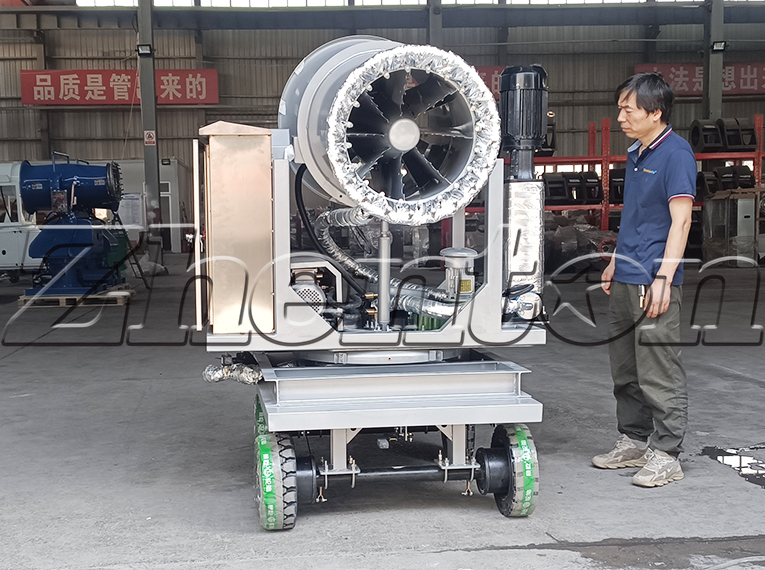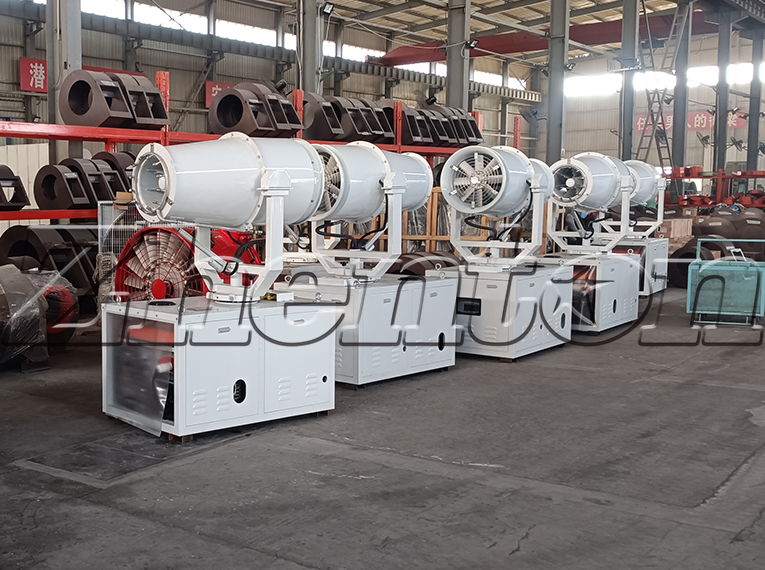Facing the challenge of air pollution, Thailand has implemented the National Clean Air Action Plan since 2019, which clearly sets a target of reducing major pollutants by 40% by 2030. It also classifies "air pollution control equipment manufacturing" as a priority sector, providing policy support for the promotion of efficient emission reduction technologies. Among these technologies, dust cannons have emerged as a key force in this pollution control campaign due to their unique advantages.
The core working principle of a dust cannon is as follows: a high-pressure pump pressurizes water, which is then converted into micron-sized water mist through a specially designed atomizing nozzle. A fan then sprays this water mist directionally into the air. These tiny water droplets fully come into contact with particulate matter such as PM2.5 and PM10 in the air. Using the adsorption effect of water molecules, they condense the particulates into clusters, which eventually settle on the ground, achieving rapid dust reduction. At the same time, the evaporation of the water mist can also adjust the local air humidity, helping to improve air quality.
In the heavy chemical industrial zones of Thailand's Eastern Economic Corridor, dust cannons play a crucial role. This area is home to a large number of steel and chemical enterprises, which are prone to generating dust pollution during production. Multiple dust cannons are deployed by area, and they automatically adjust the spray angle and range based on real-time monitored dust concentrations, forming an extensive "air purification network". This effectively controls the spread of dust in and around the industrial parks, helping enterprises meet the emission requirements specified in the National Clean Air Action Plan.

Dust cannons also perform exceptionally well in municipal environmental sanitation in cities like Bangkok. On busy main roads, sanitation vehicles equipped with dust cannons operate regularly. The sprayed water mist not only absorbs particulates from vehicle exhaust but also suppresses road dust, significantly improving the air quality around the roads. Data shows that the PM2.5 concentration on roads where dust cannons are used is reduced by an average of more than 35% compared to areas without their use.
In addition, dust cannons have become standard equipment in scenarios such as mining and construction in Thailand. Their flexible mobility allows them to follow the progress of work areas for real-time dust reduction, preventing dust from spreading over a large area with the wind and causing widespread pollution. Today, with their advantages of high efficiency, convenience, and low cost in emission reduction, dust cannons are helping Thailand gradually achieve the goals of the National Clean Air Action Plan and making an important contribution to safeguarding clean blue skies.











